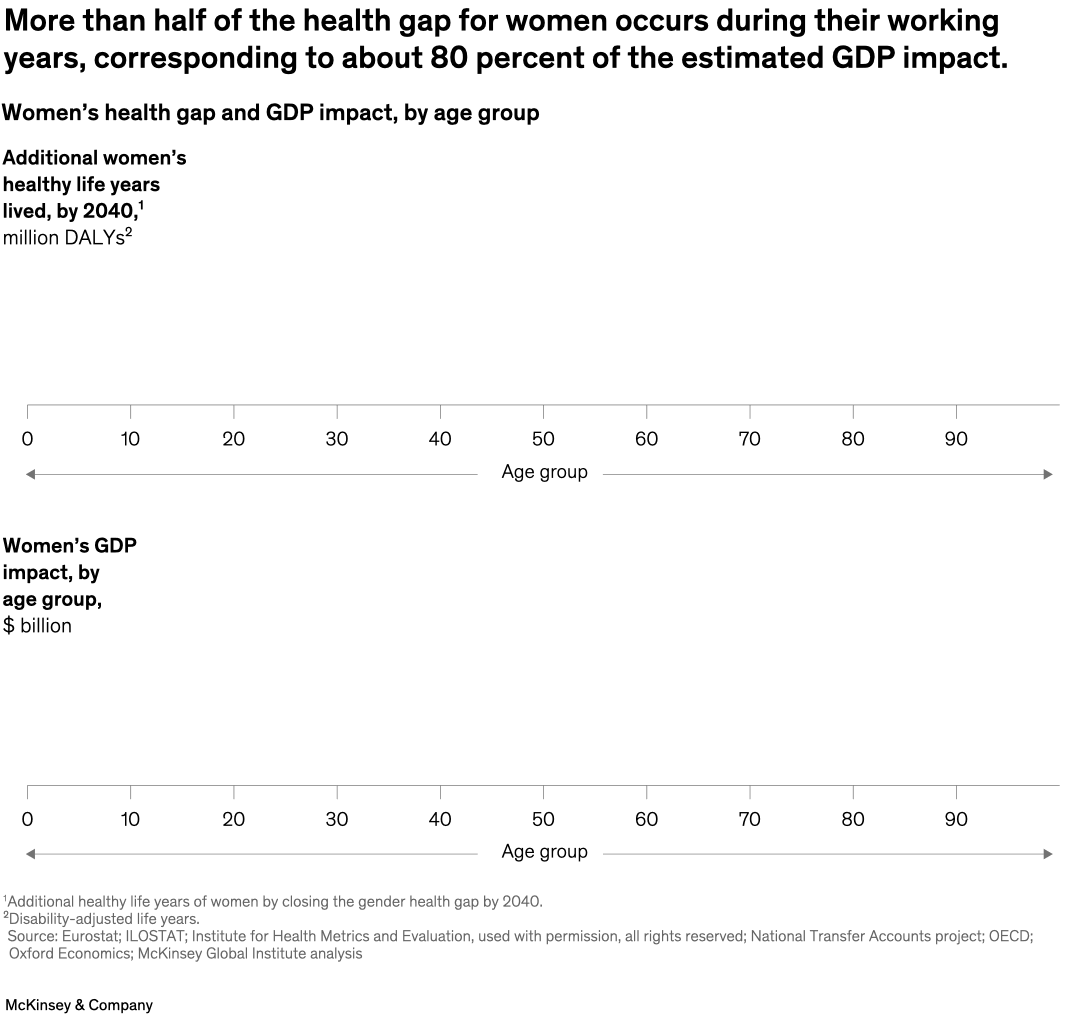Women spend about 25 percent more time than men in poor health, a gap that, if eliminated, could improve lives and boost global GDP by $1 trillion each year by 2040. More than half of this gap occurs during women’s working years, from 20 to 70, according to senior partners Kweilin Ellingrud and Lucy Pérez and colleagues. Achieving health equity may require addressing data gaps and disparities in healthcare delivery, among other factors.

Image description:
A pair of bar graphs show women’s health gap by age and the GDP impact of women by age. The first graph shows the estimated additional women’s healthy life years lived by the year 2040 in millions of disability-adjusted life years if the health gap was removed. More than 55% of the female health burden happens during their working ages, from ages 20 to 70. The second graph shows the GDP earning potential of women, segmented in the same age groups; ~80% of the GDP impact is generated in working ages 20 to 70, demonstrating the impact that solving the health gap for women could create.
Source: Eurostat; ILOSTAT; Institute for Health Metrics and Evaluation, used with permission, all rights reserved; National Transfer Accounts project; OECD; Oxford Economics; McKinsey Global Institute analysis.
End of image description.
To read the report, see “Closing the women’s health gap: A $1 trillion opportunity to improve lives and economies,” January 17, 2024.